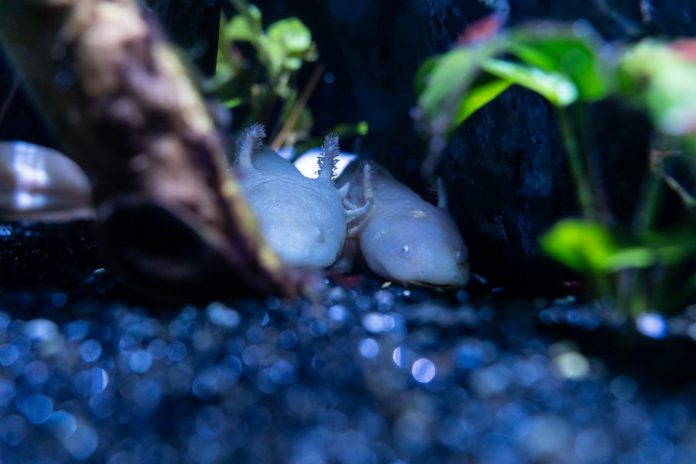
For centuries, scientists have marveled at salamanders’ ability to regrow entire limbs, but exactly how they do it has remained a mystery—until now.
A new study from Harvard University has uncovered a key part of the secret: axolotls, a Mexican salamander species famous for their regenerative powers, use the same “fight or flight” network that controls stress responses in humans to trigger regeneration throughout their bodies.
The research, published in Cell, shows that when an axolotl loses a limb, its sympathetic nervous system—the same system that releases adrenaline during moments of fear or danger—activates stem cells all over the body, not just at the injury site.
This activation essentially puts the animal’s entire body into regeneration mode.
“We’ve shown the importance of adrenaline in preparing cells for regeneration,” said Duygu Payzin-Dogru, the study’s lead author and a postdoctoral researcher at Harvard.
“Because humans also have adrenaline, this suggests we might be able to use some of the same mechanisms to promote regeneration in people.”
The discovery comes from years of research led by Professor Jessica Whited at Harvard’s Department of Stem Cell and Regenerative Biology.
Her lab focuses on understanding how axolotls regrow limbs and what makes them unique among vertebrates.
While many invertebrates—like worms—can regenerate entire bodies, salamanders are the only vertebrates that can regrow full arms, legs, and even parts of their spinal cords.
When an axolotl loses a limb, it forms a blastema, a clump of special cells that divide and develop into new tissues like bone, muscle, and skin.
In 2018, Whited’s team discovered that limb amputation caused cells throughout the animal’s body to start multiplying, not just near the wound. This hinted that regeneration might involve a full-body response.
The new study reveals how this happens. The researchers found that the adrenergic signaling network, part of the sympathetic nervous system, coordinates the body-wide reaction.
This system uses the stress hormones epinephrine (adrenaline) and norepinephrine to send signals across the body, activating stem cells in uninjured tissues.
These cells rearrange their DNA structure to make regeneration-related genes easier to access—essentially preparing themselves for potential injury.
“The animal seems to form a short-term memory of the injury, bodywide,” said Payzin-Dogru. “It’s like the body goes into a ‘get ready’ mode in case another limb is lost, allowing it to regenerate faster.”
However, this state doesn’t last forever. The researchers found that the body-wide activation only continues for a few weeks before fading, likely because it consumes too much energy to maintain long term. After about a month, there was no longer a difference in regeneration speed.
The team also discovered that different branches of the stress-signaling system have separate roles: one (called alpha-adrenergic signaling) primes distant cells for regeneration, while another (beta-adrenergic signaling) helps new tissue grow at the wound site.
These signals also trigger other important processes, like the mTOR pathway, which controls cell growth and metabolism.
The finding overturns long-standing assumptions that limb regeneration is a purely local process. “For two hundred years, scientists have known that nerves are needed for regeneration,” Whited said. “But most people thought it was sensory or motor nerves, not sympathetic ones.”
She believes the study marks a turning point in regeneration research. “This shows limb regeneration isn’t just about what happens at the site of injury—it’s a whole-body response,” Whited said.
“That’s a paradigm shift. It opens up exciting new possibilities for understanding—and maybe even recreating—this ability in humans.”



